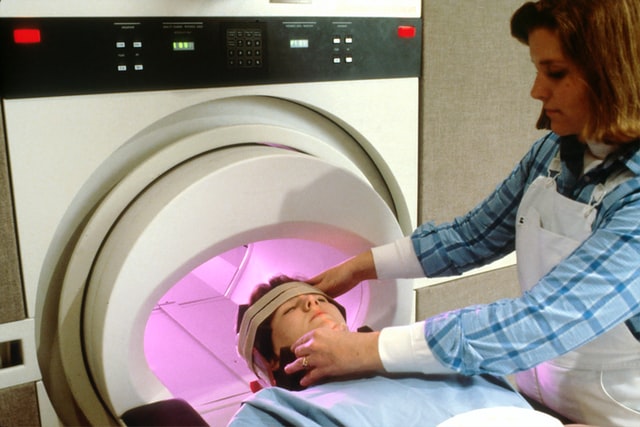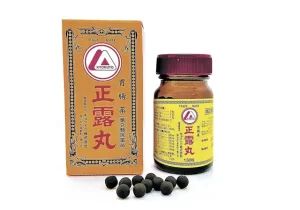5-year survival rate: Why is 5 years the key point to tumor recurrence?
- Gut Bacteria Enzymes Offer Hope for ABO Universal Blood Transfusions
- Well-Known Japanese Medicine Exposed for 30 Years of Data Falsification
- Oregon Reverses Course: From Decriminalization to Recriminalization of Drug Possession
- Why Lecanemab’s Adoption Faces an Uphill Battle in US?
- Yogurt and High LDL Cholesterol: Can You Still Enjoy It?
- WHO Releases Global Influenza Vaccine Market Study in 2024
5-year survival rate: Why is 5 years the key point to tumor recurrence?
- Was COVID virus leaked from the Chinese WIV lab?
- HIV Cure Research: New Study Links Viral DNA Levels to Spontaneous Control
- FDA has mandated a top-level black box warning for all marketed CAR-T therapies
- Can people with high blood pressure eat peanuts?
- What is the difference between dopamine and dobutamine?
- How long can the patient live after heart stent surgery?
5-year survival rate: Why is 5 years the key point to tumor recurrence?
You know tumor treatment: Why is there the concept of “5 years”? 5 years is a hurdle for cancer patients, If it can span 5 years, it is called “clinical cure”.
Many patients do not understand the “five-year survival rate”. Others asked, “Is it possible that you can only live for 5 years if you are sick?”
The 5-year survival rate refers to the proportion of a certain tumor that survives more than five years after various comprehensive treatments. There is a certain degree of scientificity in expressing the five-year survival rate. In a study of nephrotic syndrome, the conclusion also suggested that if there is no recurrence within 5 years, the recurrence rate will be greatly reduced to a relatively safe level.

1. Why is the concept of “5-year survival rate” chosen clinically instead of 1 or 3 years?
The 5-year survival rate refers to the proportion of a certain tumor that survives more than five years after various comprehensive treatments.
picture
Clinically, the “5-year survival rate” is usually used to evaluate the long-term efficacy of tumor treatment, which has a certain degree of scientificity, mainly because after most tumors undergo comprehensive treatment, some patients will experience recurrence, metastasis, drug resistance progression or even death.
For tumors that can be removed by radical surgery, about 80% of recurrence or metastasis events occur within 3 years after radical surgery, and about 10% occur within 5 years after radical surgery. If there is no recurrence for 5 years after radical surgery Recurrence and metastasis, the risk and probability of recurrence are very low. It can be considered as a clinical cure (but does not mean that there is no risk of recurrence). Therefore, the 5-year survival rate is often used to evaluate the efficacy of tumor treatment, and it is also convenient to compare different countries and regions. Differences in therapeutic efficacy between. In fact, the 5-year survival rate here includes the population of patients who have survived more than 5 years regardless of recurrence and metastasis within 5 years (survival without tumor or survival with tumor).
In addition, clinically, the 3-year disease-free survival rate is also commonly used to evaluate the therapeutic effect, which refers to the proportion of patients who have no recurrence and metastasis within 3 years after surgery and are still alive, because most recurrence and metastasis occur within 3 years.
The earlier the tumor is detected, the higher the 5-year survival rate after radical surgical resection. For example, for colorectal cancer, the 5-year survival rate for stage I colorectal cancer is about 90%, the 5-year survival rate for stage II colorectal cancer is about 70%, and the 5-year survival rate for stage III colorectal cancer is about 50%. For advanced tumors, some tumors with high malignancy and poor therapeutic effect may have a 5-year survival rate of 0. For the evaluation of the efficacy of this part of patients, the commonly used indicator is the median survival, which means the cumulative survival rate is 50%.
The survival time corresponding to time indicates that some and only 50% of patients can survive this time. For example, the median survival time of advanced lung cancer in the era of chemotherapy alone is only about 1 year, which means that only 50% of patients can survive 1 year, and the 5-year survival rate is less than 5%.
However, with the advancement of treatment methods, the treatment level of advanced lung cancer has been greatly improved. In the age of immunotherapy, the 5-year survival rate of advanced cancer has also increased by 3-4 times, reaching about 20%. The higher the 5-year survival rate, the higher the treatment level and the better the treatment effect.
2. How did the disease develop within 5 years after diagnosis?
After the tumor is diagnosed, different stages, treatment methods and subsequent disease development are different.
For the earliest (stage I) tumors, such as lung cancer or bowel cancer, most of them have no obvious symptoms and are often found by physical examination. In this case, surgery is the first treatment method. Stage I lung cancer and gastrointestinal tumors are both There is no need for follow-up chemotherapy, and regular review after surgery. For stage II-III tumors, after diagnosis, some can be directly operated with drug-assisted treatment after surgery. In some cases, pre-surgery drug treatment or radiotherapy is required. Surgery will be performed after the tumor has shrunk, and consolidation will be performed after the surgery. treatment.
In either case, it is also necessary to conduct regular review within 5 years to prevent recurrence, and early detection and early treatment even if recurrence and metastasis occur. For newly diagnosed, advanced inoperable tumors, some patients can be treated with drug conversion to meet operable standards. They also have the opportunity to achieve radical cure. For example, bowel cancer liver metastasis, the current 5-year survival rate reaches 30%-40% . Other patients have entered the long-term maintenance and control of drugs. While taking into account the quality of life of the patients, they can control the development of tumors and prolong survival time.
3. What is the clinical significance of “5-year survival rate” or “no recurrence within 5 years”? How should the patient treat it?
The “5-year survival rate” includes tumor-free patients who survived more than 5 years after the diagnosis of tumors and patients with tumors; while “no recurrence within 5 years” or 5-year disease-free survival rate refers to the absence of disease within 5 years after surgery. The proportion of patients who have relapsed and are still alive. This part of patients has largely achieved clinical cure.
picture
In clinical practice, doctors refer to the 5-year survival rate, which does not mean that the disease can only live for 5 years, but the probability that the survival time can exceed 5 years. The higher the 5-year survival rate, the better the treatment effect of the disease; The non-recurrence within 5 years not only reflects the effect of the treatment, but also reflects that the biological behavior of the tumor itself is not so malignant and the cure rate is high.
Therefore,
- During the “clinical cure” stage, tumor cells may still exist
- There is a possibility of recurrence, and it cannot be called a “complete cure”,
- Although patients do not need long-term medication,
- But it’s not peace of mind,
- Must be reviewed regularly to prevent recurrence! ! !
(source:internet, reference only)
Disclaimer of medicaltrend.org
Important Note: The information provided is for informational purposes only and should not be considered as medical advice.



